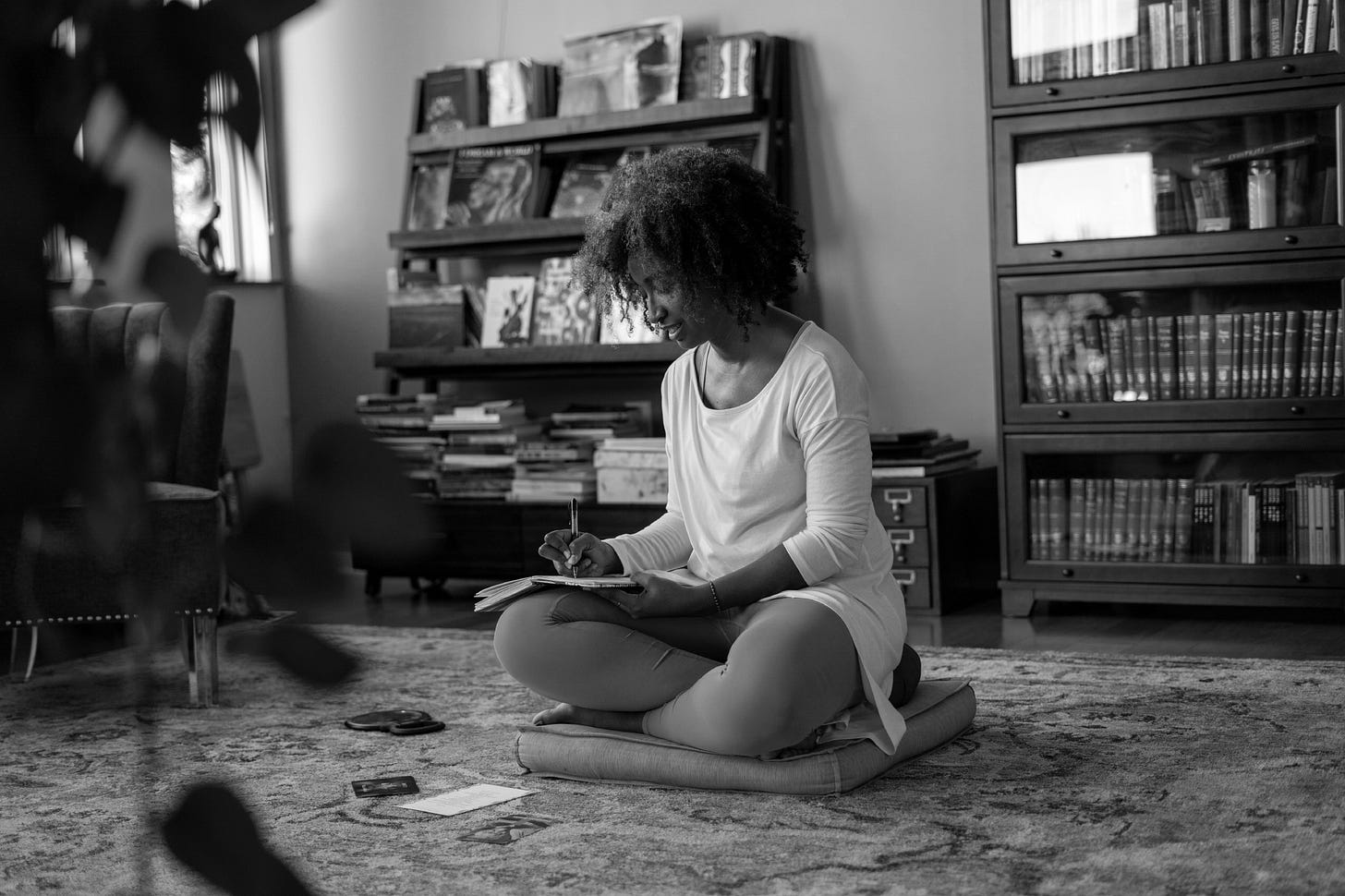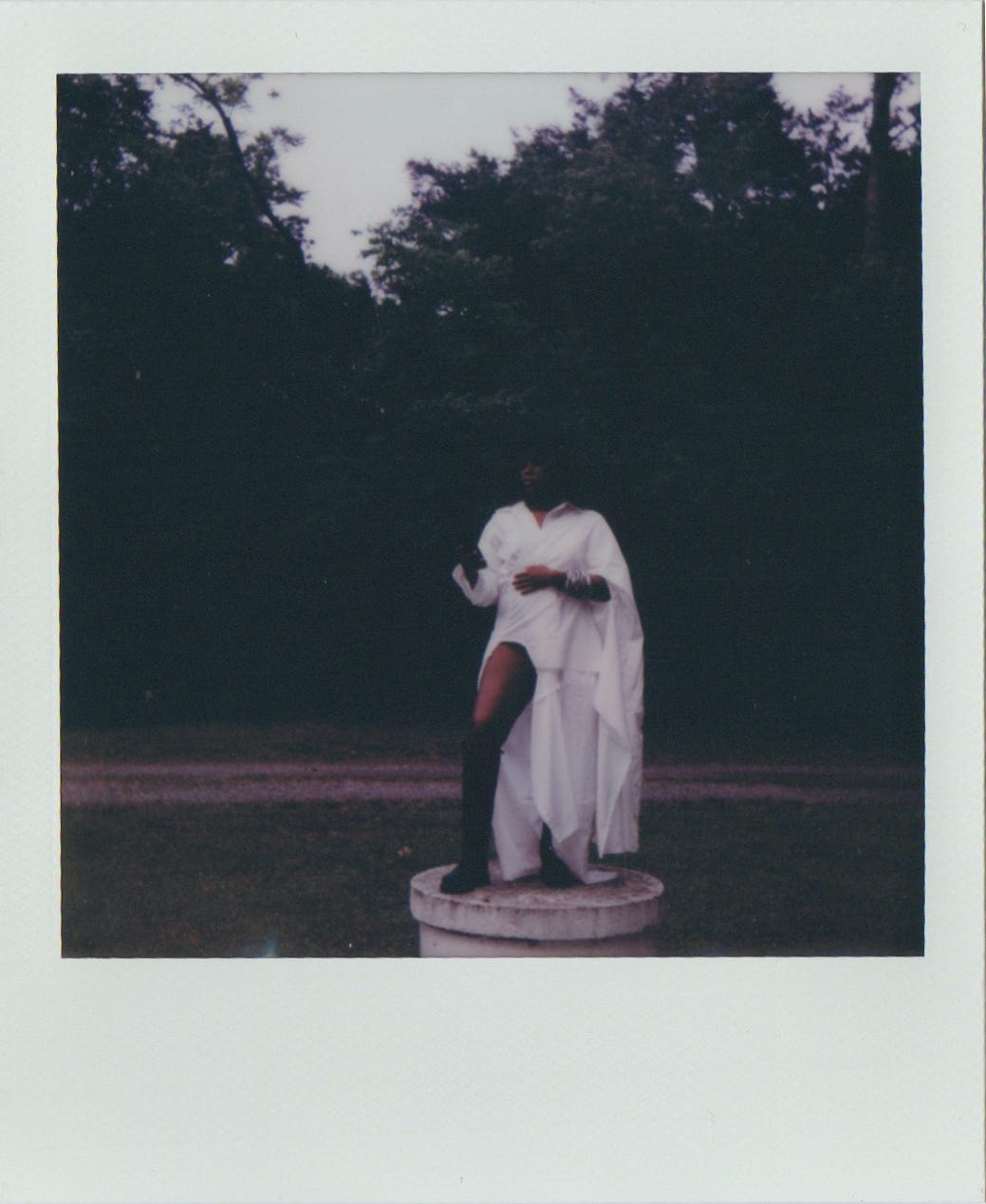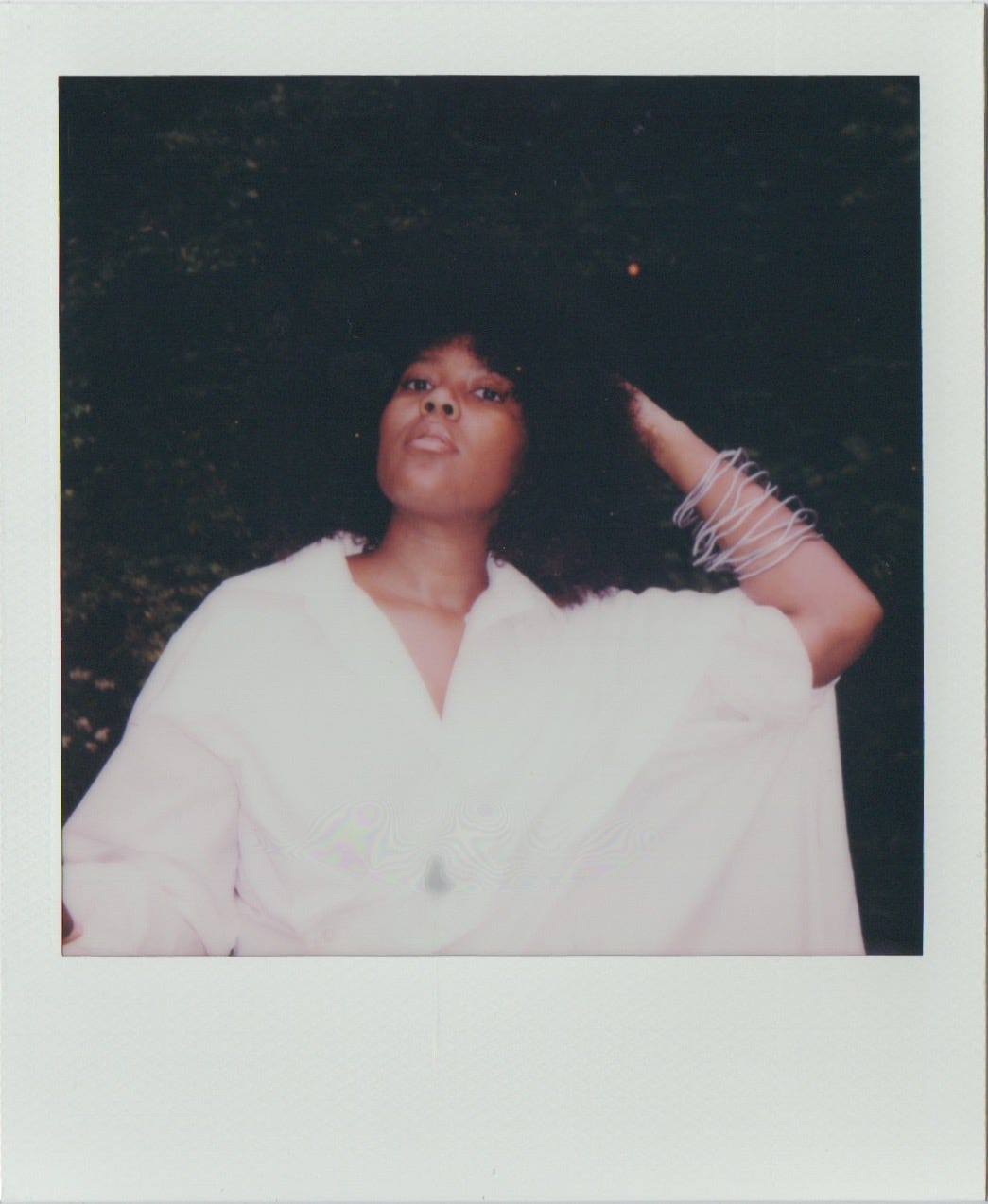
“Freedom is not a secret. It’s a practice.”
— Alexis Pauline Gumbs1
You’re not lost, you’re just acting ashamed of what you found
What you found is writing about freedom and playing in the mud is enough. You found that using your pen to observe your thoughts is enough, sitting at your sewing machine and thinking through cloth is enough, carving the earth’s clay into earth-like formations is enough. You found living on Mattaponi and Youghtanund land which has been tended to by three generations of your matrilineal family is enough. Your creative practice is enough, but why and how do you keep forgetting that? What are your daily and weekly practices that keep you accountable to your needs? What are your ceremonies for practicing being here, here, here?
This newsletter took longer to write. For weeks I kept adding thoughts, forgetting those insights then returning again to remember. Much like the cycle of daily practice itself, I began to feel myself writing in circles. I’d remember how essential walking with trees and meditation was to my daily practice then I wouldn’t do it for a week. I’d remember the ceremony of centering I invoke before, during, and after a long hot bath then I wouldn’t do it for months. I’d remember how mandatory making with my hands was to knowing how to be in the world then I wouldn’t do it for years.
When I allow myself to drop into self-awareness, I observed whenever I treated my collection of safe habits2 as optional is when my faith suffered most. Dropping even further into self-awareness, I notice whenever I fall into the trap of treating my practices as optional it’s because behind that cause and effect loop is a decision pattern rooted in spending too much time in the past or the future. The cycle looks something like this:

This unhelpful loop is almost always triggered by some obsessive prospective or retrospective3 evaluation of my life. When my mind begins to spend too much time in the past or the future (it’s usually the future for me), I find myself living for that time, living within that time, and forgetting to live for who I am right now and what I can offer today. I abandon my daily practices, I lose faith, and despair finds its way in once again. In my observation, this seems to happen in a weekly cadence. It has prompted me to ask what are my daily/weekly” practices that keep me accountable to the present?
Last week my sister Mia reminded me, we’re always so focused on our “becoming” that we forget to celebrate who we are now. So, in celebration of the now, I drop into this molasses minute. I will stretch it out like dough and wedge it like clay folding in my gratitude, attention, and faith. To practice presence is a recursive move. A practice of a practice. I call this recursive posture sitting inside “the divine present or presence of practice” or better, what Alexis Pauline Gumbs calls “ceremony”.
This project is an artifact and tool for breath retraining and inter-species ancestral listening. It is structured to ask, what if you could breathe like whales who sing underwater and recycle air to sing again before coming up for air? What if you could breathe like coral from a multitude of simultaneous openings connected to one source built upon the bones of all your dead? What if you could breathe like cyanobacteria who made the sky into oxygen millions of years ago and sent their contemporaries to a world of sulfur deep under ocean and ground? What then? And by then I mean now. These are the ceremonies I found. You will find, especially if you read aloud, but even if you don’t, that many of these passages ask of you what my ancestors are asking of me. When you think it’s time to come up for air, go deeper. When you think your heart will break, stay there, stay with it. But at the same time, when you think you gotta hold onto something (like who you think you are), let go.
— Alexis Pauline Gumbs, Dub: Finding Ceremony (2020), pg. xiii

The Cycle of Death and Rebirth
In my quest for ceremony, if letting go is one of the steps, grace must be in the order of operations too. In the case of my compulsive prospection, I know my obsession with the future is just an obsession with the illusion of control — more succinctly, it’s a craving for safety. I know my fixation on goals not yet achieved comes from a deep desire to control the outcomes and that deep desire comes from feelings of lack of control due to threats to my bodily autonomy and safety in childhood. I know practicing presence requires surrender and allowing myself to feel all the above. I know it requires a surrendering of control and the myth that I could control the outcomes in the first place. This is why grace is so essential, in a world where we’re all victims of something, feelings of safety are sacred and sought after by our nervous system. Our collective desire for safety has been co-opted by capitalism where this desire is informed by misguided stories that we can successfully “secure safety” through mechanisms of control and embodied dominance over our needs, each other, and the planet. In one version of the world, this serves those in power. The version of the world I’m iterating and practicing towards invites us into the safety that can be found in the vulnerability and abundance in releasing control of the outcomes. How might we find safety in the practice of surrender?
“what if you were reborn with nothing to prove. you didn’t need anything named after you or anyone to notice. what if you were reborn with nothing to give and you gave it happily and didn’t seek more. what if you were born living just the one life, with no pressure to erase or uplift those that came before you. what if you were born just to dance and sing and cry with the ones who adored you and the ones who deplored you. what if you were born with keys and found nothing was locked and your spirit wasn’t shocked by open doors. what if you were born with absolutely nothing to prove. nothing to reach for or store. what if you were born with nothing, less than nothing. meaning, more.
there is no rejection. there is calling. may you always be available to your purpose.
there is no proof. there is presence. may you always be all of where you are.
there is no problem. there is practice. practice letting go.”
— Alexis Pauline Gumbs, Dub: Finding Ceremony (2020), pg. 248-249
I died last week then remembered why I wanted to live. To forget is a certain kind of death, to remember is a certain kind of rebirth. Organic material in the forest’s soil is made possible only through decay. Trees and leaves fall and create a nutrient rich compost, in the forest, dead matter is what supports life. In “Finding the Mother Tree: Discovering the Wisdom of the Forest” Suzanne Simard reminds us saprophytes are a “fungal species that decomposes dead stuff”, crucial to the cycling of nutrients. She continues, “without the saprophytes, the forest would choke from accumulated detritus”4. What are the saprophytes in your daily practice cycling the nutrients inside of your forgetting and returning? I am witnessing myself become a student of my cycles of shedding, allowing lessons from old skin, old habits, and old stories serve as nutrient rich organic matter supporting my blooming practices in this present. Seedlings informed by years of running toward the next goal post has taught me I was engaged in a commitment to being unsatisfiable because complete control is unachievable. Today, I remembered class is always in session inside the present moment. I raise my hand and ask, how might I drop into the abundant life source that is every moment, every breath, every heartbeat, every blink, every word spoken, every glance, every wind, every smile? A decade of embodied dominance over my needs created an obsession with the past and the future, uncovering a restless relationship with the present. I thrive in transitions and struggle in stillness. While I am forever learning, one thing that feels true is one can not solely subsist on the hope of tomorrow for a lifetime. The homework was to gather a collection of practices that allowed me to practice presence (there goes that recursion again) and report to class again next week. And the week after that and the week after that.

“let the muscles in your hands grow more swift more sure from remaking it every day. a curved place to live on indented by teeth, crumbled by dryness. moisten it with what you have. spit and tears. smooth it out with what you are doing. you will feel every imperfection. you will accept some of them. you will even love some difficult edges. you can watch the river go by. you can look at the TV while you do it. maybe even have a conversation (though it will impact the consistency of your shape). but if you can. use both hands.”
— Alexis Pauline Gumbs, Dub: Finding Ceremony (2020), pg. 68
With both hands, I am grieving the old stories of securing safety only through sacrifice. I am grieving the potent but fleeting high I get from transcribing visions of the future into quarterly milestones I obsess over daily. I am allowing the saprophytes in my daily practice to break down my habit of coping with the illusion of control. I am still in class and while I’m not always the most punctual, attentive, humble, and teachable student, I have been attempting the homework — I have been assembling my own set of practices that make me more comfortable in the stillness. Less anxious inside the commitment to refuse to run and look instead. To get curious about the grief, the trauma, the desire, the harm, and the death…so much death. This move to get curious instead of run was the first practice, the first step to finding home in the present. From here other practices began to illuminate getting comfortable with stillness, getting cozy with the present and the inevitability of change. Inside this practice, the life cycle of my forest became less terrifying.
I am Learning
To write to reflect
To walk to tune in
To jog to practice endurance
To meditate to expand
To soak in hot water to remember
To self document to return
In “The God of Everyday”5 Alexis Pauline Gumbs shares, “I was born on a Saturday and I take my rebirth seriously. I celebrate my birthday better weekly than annually. Which is to say that creating ceremony requires rebirth…I am inside these repeatable practices. I am becoming something else. We are becoming something else. Which is why we need a ceremony. Happy birthday.” I am in the process of creating ceremonies to celebrate my weekly return, my weekly rebirth, such as this weekly newsletter and a weekly self portrait. I have learned to practice writing, running or walking, and mediation daily. I have learned to invoke ceremony in a hot bath to celebrate my birthday. I have learned to practice dropping into the divinity of the present. I have learned how daily attendance to this class is life preserving. I am practicing remembering this moment will never happen again. And when I find my mind drifting to the future and staying there too long I ask: What is truly lurking in the gap of who I am and who I want to become that stops me from accessing the pleasure of right now? Then I go draw a bath to remember.
With both hands, I return to watching the blackness of my skin, drenched in lavender infused coconut oil, reflect the candle light as I move slowly in water memory absorbing the sounds of Alice Coltrane. I return to listening to my feet carry me for minutes and miles as I run under towering loblolly pines focusing on my breath and not the clock. I return to feeling the pinprick of light glowing in the center of my chest stretching across the field of flowering grass I sit across during mediation. Present to the light flooding my chest, traveling through my tummy, traversing my legs and touching my toes — completing the relay, the light travels back up to relax my shoulders and soften my arms finally greeting my head with grace and the whole body surrenders to the safety found in the presence of this moment.

I return here, here, here in the cypher of my practice to remember you will never step into the same river twice. Here, where this exact moment will never happen in this exact way ever again. Here, where birdsong is free and air heavy with the smell of wet Virginia Pine is on tap at dawn. In Dawn, Virginia here, hear, here. If I listen closely, sit still, and learn to lean far enough to trust my balance, they invite me to remember. Tell me and all my cares to circle around and suspend worry for just a few malleable minutes — the south sings — ecosystems humming with memory to the vibration of your ancestors' lullabies allowing you to tune out time. Here, practice being here. Where the present reverbs, “if you’re still restless, there’s still lessons”.
“i practiced. looking into the faces of my sisters. until it didn’t hurt anymore. until any wrinkles from squinting at the sun became laugh lines. i struggled. to put my hands in the fire until even coals became cool and no surface could hurt me again. i persisted through pregnancy and birth until i knew. i knew creation. i did it nine times and then i was eternal. you know what i mean. notice the challenge. notice the discomfort. notice how many times you want to run away from you and us and everything. notice. and do not stop.
— Alexis Pauline Gumbs, Dub: Finding Ceremony (2020), pg. 87
There are layers of poesis around practice, cycles, and loops that I am trying to get under and articulate. Layers of salt, layers of soil, layers of sound, layers of soul that it builds up and breaks down only to rebuild again. It has something to do with the creative practice and simultaneously forgetting and remembering each other. It has everything to do with the lifecycle of the forest and teaching us about our ability to surrender long enough to let spirit show you the safety inside the regenerating life-force of faith. Is forgetting part of the practice? Forgetting in the face of fear only to remember in the face of another. Does the forgetting facilitate the rebirth? Must I always leave to return? What if the practice isn’t staying in remembrance, what if the practice is creating a safe space for the cycle of forgetting — maintaining the garden of longing so we never stop looking? I’m learning to surrender control, let the saprophytes of my spirit do their job, and find safety in the cycle. To practice presence is a recursive move. A practice of a practice. See you in class tomorrow.
Recursion in JavaScript
From inside the function of practicing presence my feelings of safety compound. Below is an example of recursion in JavaScript where my safetyBaromenter increments with each recursive loop.
const practicePresence = (safetyBarometer) => {
meditate()
write()
walkWithTrees()
selfPortrait()
soakInWater()
practicePresence(safetyBarometer++)
};
practicePresence(0)
To learn more about recursion and the increment operator in JavaScript check out the MDN docs linked above.
The “Freedom is not a secret. It’s a practice.” quote can be found on the homepage of Alexis Pauline Gumb’s website
“A collection of safe habits” is a line borrowed from Lucille Clifton’s poem titled i am not done yet, published in Good Woman: Poems and a Memoir 1969-1980 (1987)
There is an interesting podcast by The Atlantic with the awkwardly straight-forward name, “How To Build a Happy Life” in episode 5 titled “How to Know That You Know Nothing” the host Arthur Brooks names “retrospection” and “prospection” as our ability to evaluate and almost live inside the past or the future.
Suzanne Simard, Finding the Mother Tree: Discovering the Wisdom of the Forest (2021), pg. 61
The God of Every Day is an essay published by Topical Cream on December 22nd, 2021 by Alexis Pauline Gumbs



